The short version: The Ecosystem Guild cultivates a global regenerative bioregional culture based on reciprocity, gift, conviviality, and consent.
Vision
We imagine a future where every watershed is known by its inhabitants, and tended for future generations. Watershed by watershed we regenerate the Earth.
We suspect that a “regenerative bioregional culture” evolves through intimate relationships with local ecosystems. The ecosystem provides food, water, shelter, and inspiration. In return we tend the ecosystem so it remains productive, diverse, resilient, and able to evolve. Our Lushootseed-speaking predecessors here in the Salish Sea cultivated local ecosystems over 10,000 years. We took those systems and with our colonial-industrial culture we broke them in 150 years. This cannot be undone. We get to start from where we are now.
We work for our children. The “super power” of our species is that we evolve through culture. We inherit a culture at birth, and for better or worse, we will pass it to our kids. If our culture is broken and dangerous, its our job to fix it. You can tell if a culture is ecological degenerate by observing what it does, using the scientific method. Words can be deceptive.
Mission
We practice and teach stewardship through seasonal work and simple living on ecologically important lands
For obvious reasons, we must learn how to live in an ecosystem without breaking it. This involves creative and effortful labor and living without unnecessary consumption. It requires formation of productive groups of people that are motivated by values and for direct relationships with the land.
Structures
At this point in time, no one represents the guild, and no one speaks for the guild. We anticipate that the Guild will develop through the cultivation of shared infrastructures:
- Strongholds are locations where networks of groups are settled and building social and ecological infrastructure to restore ecosystems. We cultivate groups, and groups of groups where we live to experiment with biocultural restoration.
- Biocultural Restoration Field Stations are where strongholds gather to regenerate ecosystems on common lands, share in experiments and study, and strengthen our networks. Field stations are recurring off-grid gathering sites in areas of important ecological restoration activity. We operate adjacent to and augment the capacities of our existing civil society institutions.
- The Salish Sea Wiki is a web-based open knowledge network used to store shared knowledge of places and topics. We learn how to capture, experiment, store, and share to build the knowledge we need.
- The Eight Season Year is a framework for tying our work to the rolling cycles of temperate ecosystems, so that our work and culture become aligned with the rhythms of life. We make good use of time, and the work of our other-than-human collaborators.
- This Website is offered as a gift to the guild by Paul Cereghino as place to curate core information.
- A Facebook Group provides a opportunity for self-promotion, recruitment and casual information exchange.
Forming effective groups able to act upon their values is vital societal function. Our social infrastructures are weakened when hierarchical institutions horde power, information and resources, and compete with each other to capture our loyalty and labor.
Inspiration
The evidence of our success is ecological, but the essential work of The Guild’s is cultural. Some of us explore consent-based governance using sociocracy. Some explore group coherence frameworks like Prosocial, and its integration of Ostrom’s design principles for stewardship common pool resources. Others may explore nonviolent communication and other strategies for challenging the internal conditioning of our colonial culture. We envision a network of members, with clear values and goals, empowered and strengthened through reciprocal relationships.
As a landowner working with a guild site steward, you get a professional partner with exceptional integrity, at no financial cost, followed by a cadre of self-organized volunteers. We are good at clear agreements, but we don’t necessarily “work for you.” We may ask for something in return for our work. We aim to build a regional network of lands and people engaged in rigorous and mutually beneficial relationships. As a conservation land manager, we invite you to join us in that experiment. In support of our vision, some of us network through the Design Institute for Regenerating Earth and its emerging global bioregional networks. Finally, our Field Stations are inspired by the Ecosystem Restoration Camps movement. They let us step away, reduce consumption, and connect with the land and each other, while rebuilding soils and forest biomass, capturing and storing water, and restoring and protecting biodiversity.

